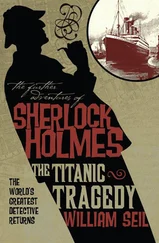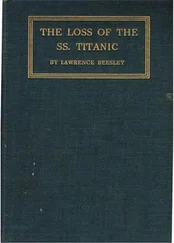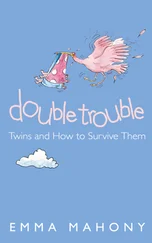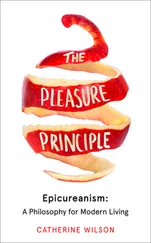Five weeks after the wreck, while at a lunch party in Boston, Beesley was persuaded by the editor of the Boston Herald to try his hand at writing something longer and the publisher Houghlin Mifflin provided him with a room in a residential club in order to get it done. It took Beesley six weeks to produce his masterpiece. A man raised on adventure stories and tales of the sea, Beesley, discarding his journalistic voice, described in novelistic detail the romance of ship life: ‘Each morning the sun rose behind us in a sky of circular clouds, stretching round the horizon in long, narrow streaks and rising tier upon tier above the skyline, red and pink and fading from pink to white.’ He watches from the top deck ‘the swell of the sea extending outwards from the ship in an unbroken circle until it [meets] the skyline with its hint of infinity’. 9On board, Beesley is as calm and contained as a babe in his mother’s arms. Even after the ship has struck the iceberg, he explains that ‘to feel her so steady and still was like standing on a large rock in the middle of the ocean’. 10In order to help his readers to imagine the vertiginous experience of being lowered in a lifeboat, he asked them to measure seventy-five feet of a tall building and then look down.
It is when he describes the Titanic ’s final moments that Beesley reaches the limits of what can be expressed. ‘I realise how totally inadequate language is to convey to some other person who was not there any real impression of what we saw,’ and he returns again and again to the inadequacy of language when faced with extremities on this scale. ‘No novelist would dare to picture such an array of beautiful climatic conditions,’ he says of the sunrise over the icebergs on the morning after the wreck. ‘No artist could have conceived such a picture.’ His subject, Beesley realises, is no longer the ‘lessons’ to be learned from the loss of the Titanic; he is now writing about inexpressibility. More than this: his subject has become inexpressible; to describe the ‘high drama’ of what he experienced ‘borders’, as he puts it, ‘on the impossible’. Beesley’s book is not only about the Titanic; it is about everything. But his story could also, he says, be contained in ‘a single paragraph’ and he gives us that paragraph on his opening page: ‘The keel of the Titanic was laid on March 31, 1909, and she was launched on May 31, 1911; she passed her trials before the Board of Trade officials on March 31, 1912, at Belfast, arrived at Southampton on April 4, and sailed the following Wednesday, April 10, with 2,208 passengers and crew, on her maiden voyage to New York.’ 11
Beesley wants to produce a work of literature and not a catalogue of facts. But there is a sense in which the experience of the Titanic is best expressed not in sentences but as a list. It is as a list that the story first began to shape itself: the passenger list provided the most popular reading on board, after which the list of survivors became the most widely read document in the world. Columns analysing the percentages of deaths in first-, second- and third-class have been pored over for a century, and we continue to be staggered by the quantities of employees and objects on board the ship. The story of the Titanic could be written as an inventory. The kitchen and dining-room staff alone included butchers, bakers, night bakers, Vienna bakers, the passenger cook, grill cook, fish cook, sauce cook, soup cooks, the larder cook, the roast cook, Hebrew cook, pastry cook, vegetable cook, the cook and stewards’ messmen, the coffee men, the assistant confectioner, chefs, the entree cook, the iceman, the scullions, the plate-warmers, kitchen porters, carvers, scullery men, the kitchen clerk, wine butler, dining saloon steward, pantry stewards, plate steward, reception room steward, lounge attendant, smoke room steward, verandah cafe steward, ä la carte restaurant manager, maitre d’, assistant waiters, and the ship’s bugler who summoned the passengers to table. The ship’s pantry carried 500 breakfast cups, 3,000 teacups, 1,500 coffee cups, 3,000 beef tea cups, 1,000 cream jugs, 2,500 breakfast plates, 2,500 dessert plates, 12,000 dinner plates, 4,500 soup plates, 1,200 coffee pots, 1,200 teapots, 4,500 breakfast saucers, 3,000 tea saucers and 1,500 coffee saucers.
But there is also a sense in which the facts and figures tell us nothing at all, and Beesley duly arranges his version of the loss of the Titanic into nine rich and layered narrative chapters and a hundred tightly written pages. Despite his desire to tell a story, Beesley’s account pivots and stalls around a handful of words whose floating meanings he cannot pin down. The word ‘beauty’ particularly bothers him, because beauty has now aligned itself to death. He repeats the word again and again, as though trying to fix it into place: ‘the beauty of the night, the beauty of the ship’s lines, and the beauty of the lights, all these things in themselves were intensely beautiful’. 12He also returns to ‘motion’ and ‘motionless’, which terms seem to have lost their moorings. ‘The Titanic lay peacefully on the surface of the sea — motionless, quiet, not even rocking to the roll of the sea… the sea was as calm as an inland lake save for the gentle swell which could impart no motion to a ship the size of the Titanic? In Beesley’s hands ‘motionless’ also describes movement. The sea is at the same time swelling and motionless; the ship is motionless when she is both steaming ahead and sinking — ‘and there she remained — motionless!’ The sky, the floating bodies, the air, the stars, the lifeboats are all motionless — ‘the oarsmen lay on their oars, and all in the lifeboat were motionless’ — as is the cold, ‘if one can imagine “cold” being motionless and still’. 13
At his desk in the Boston club, Beesley — who has previously written only letters, university essays and school reports — cannot stop writing. He is pouring out page after page of rapt prose: ‘The complete absence of haze’, he says of the night,
produced a phenomenon I had never seen before: where the sky met the sea the line was as clear and definite as the edge of a knife, so that the water and the air never merged gradually into each other and blended to a softened rounded horizon, but each element was so exclusively separate that where a star came low down in the sky near the clear-cut edge of the waterline, it still lost none of its brilliance. As the earth revolved and the water edge came up and covered partially the star, as it were, it simply cut the star in two, the upper half continuing to sparkle as long as it was not entirely hidden, and throwing a long beam of light along the sea to us. 14
Beesley’s rhetoric recalls that of the master-mariner Joseph Conrad, and these pages in particular are reminiscent of the first part of Lord Jim, in which Jim’s pilgrim ship, the Patna, moves ‘so smoothly that her onward motion was imperceptible to the senses of men, as though she had been a crowded planet speeding through the dark spaces of ether behind the swarm of suns’. 15At times Beesley’s descriptions mirror those of Conrad with such uncanniness as to suggest he was using Lord Jim as his model. Beesley writes of being aboard the Titanic: ‘To stand on the deck many feet above the water lapping idly against her sides, and looking much further off than it really was because of the darkness, gave one a sense of wonderful security.’ 16Conrad writes of Jim on the Patna: A marvellous stillness pervaded the world, and the stars, together with the serenity of their rays, seemed to shed on earth the assurance of everlasting security.’ 17
Читать дальше












